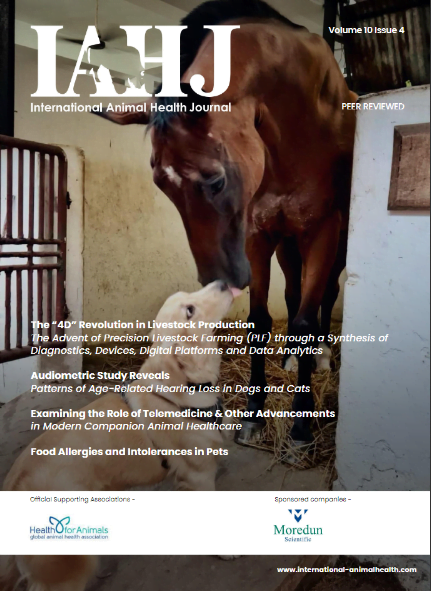A new study from biologists at The University of Texas at Arlington and an international team of collaborators provides the first comprehensive explanation of how snake venom regulatory systems evolved—an important example that illuminates the evolution of new complex traits.
Todd Castoe, UTA professor of biology, is corresponding author of the paper, titled “Snake venom gene expression is coordinated by novel regulatory architecture and the integration of multiple co-opted vertebrate pathways.” It was published online June 1 in Genome Research.
“We have relatively few detailed examples of how new regulatory systems evolve to drive novel complex traits,” Castoe said. “This study provides a valuable example that illustrates a surprising number of distinct ‘strategies’ for how evolution may rewire regulatory networks, providing key expectations for how such rewiring may occur in other species, including humans.”
Ever since Darwin introduced the theory of evolution by natural selection in the 19th century, biologists have struggled to understand how new, complex traits evolve.
Snake venom and venom systems are an example of such complex traits. Little is known about their molecular mechanisms or the genomic and evolutionary origins of this regulatory system, Castoe said.
“This work gives us a better understanding of how snake venom evolved and how venom production functions at a genomic level,” said Blair Perry, a UTA alumnus and postdoctoral researcher in the School of Biological Sciences at Washington State University. He is lead author of the new paper.
“In addition to studying specific venom genes, we can now investigate parts of the genome involved in the regulation of these genes as well,” said Perry, who received his Ph.D. from UTA in 2021 with Castoe as his faculty advisor. “This opens up new opportunities to understand how variation in snake venom, both within and between snake species, corresponds to variation in the genome.”
In 2019, the World Health Organization declared snakebite a neglected tropical disease. The primary challenge for treating snakebite is the extreme variation in venom composition across populations and species of snakes.
“Our work provides the first description of the regulatory architecture that drives snake venom expression, providing critical context for understanding the molecular interactions that govern venom variation,” Castoe said.
The evolution of snake venom required snakes to develop a highly specialized venom gland to produce and store a diverse and deadly protein cocktail for delivery to their victims. Venom glands are thought to have evolved from ancestral salivary glands, but Perry and colleagues show that this also required the evolution of new regulatory sequences and the repurposing of existing regulatory systems to control the precise expression of these dangerous genes.
“Consider the challenges to understanding the origination and maintenance of this complex chemical weapons system,” said Stephen Mackessy, professor of biology at the University of Northern Colorado and a co-author of the study. “Venoms largely consist of repurposed regulatory proteins and peptides, overexpressed and stored in a specialized gland only millimeters from the snake’s brain. These toxins must be stabilized, yet ready to go at a moment’s notice, and they may be stored for long periods of time.
“Our earlier work has demonstrated that several mechanisms exist that promote this long-term storage, but the processes leading to the regulation, evolution and diversification of these systems have largely remained unknown. This study demonstrates that in addition to the toxin genes, regulatory pathways common to vertebrate animals were also co-opted to control this system.”
Nicholas Casewell, professor and director of the Centre for Snakebite Research & Interventions at the Liverpool School of Tropical Medicine in Great Britain, is an expert in the field who was not involved in the work. He said that snake venoms are valuable systems for understanding links between the genotype and phenotype of animals, and these biochemically active secretions also have major implications for humans, as snakebites cause over 100,000 deaths a year. Despite its importance, he noted, the regulation of venom by snakes remains almost poorly understood by scientists.
“In this study the authors apply a diverse array of cutting-edge approaches to investigate this topic, and their ensuing collection of regulatory sequence, transcription factor, signaling cascade and chromatin accessibility data and associated analyses provides completely unparalleled insight into the regulatory architecture of the snake venom system,” Casewell said. “Their findings represent a major step forward in helping us to better understand how genes associated with internal physiological processes can be repurposed for external use in the form of venom.”
Giulia Pasquesi, a postdoctoral associate at the University of Colorado at Boulder who earned her Ph.D. from UTA in 2020 with Castoe as her faculty advisor, is a co-author of the paper. She examined the role of transposable elements (TE)—DNA sequences that move from one location on the genome to another—in the evolution of snake venom.
“Whether snake-specific TEs contributed to the evolution of snake-specific traits, as has happened in mammals for key traits like placentation, remained a fascinating open question until now,” Pasquesi said. “One of the findings of this study shows that the emergence of biological innovations follows recurring patterns, specifically that TEs can introduce novel regulatory sequences that ultimately facilitate the evolution of new complex traits.”
Perry said the study also demonstrates the value of considering many layers of biological complexity when seeking to understand how a trait functions and evolves.
“By combining multiple types of genomic data, we were able to gain a more complete understanding of the diverse factors that play a role in the regulation and evolution of venom genes,” Perry said. “More broadly, this work provides a valuable example of the idiosyncrasies of evolution. One might expect that all venom genes followed the same evolutionary ‘strategies’ to become involved in venom. Our findings instead suggest that remarkably different genomic and evolutionary processes played critical roles in the evolution of specific venom genes.”











